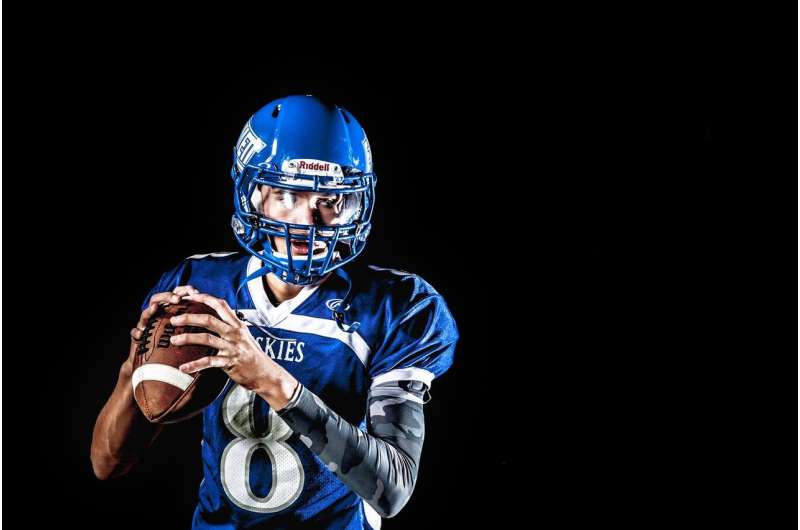Credit: CC0 Public Domain
All 50 states have passed a youth sports concussion law to help athletes and parents. But two new studies from the University of Minnesota suggest these laws are not giving athletes and parents the information they need to make informed decisions.
The studies, led by Law School Professor Francis Shen and co-authored by research assistants Carly Rasmussen and Sydney Diekmann, were recently published in the Berkeley Journal of Entertainment & Sports Law and the Duquesne Law Review.
"The fundamental question we were asking is how can athletes make informed choices when they're never told what the actual risks are?" said Shen. "We have an ethical duty to be upfront with parents and athletes about the risks of sports concussions."
The researchers reviewed more than 100 peer-reviewed publications and found that both ends of the current concussion debate are problematic. On one hand, data clearly shows that the vast majority of youth athletes will not sustain a concussion. However, it also shows that there are elevated risks in collision sports and actual concussion incidence rates are likely underestimated.
The first study, titled "How Dangerous Are Youth Sports for the Brain?" identified a number of important data trends:
- There is great variation from sport-to-sport in concussion rates.
- Sports with the consistently highest concussion rates are football, wrestling, ice hockey, soccer and lacrosse.
- Female athletes appear to experience almost double the rate of concussions as their male athlete counterparts in comparable sports (this finding, as well as additional demographic variation in concussion incidence, remains in need of further research). It is unclear if this increased rate directly translates to increased clinical impact in female athletes.
- Despite significant improvements in return-to-play protocols, much remains unknown.
Although state concussion statutes are a step in the right direction, Shen's additional research, "Are Youth Sports Concussion Statutes Working?," shows that the laws are not yet living up to their full potential. The second study's findings revealed:
- While most high schools have implemented a concussion protocol roughly consistent with state law, parents and athletes in non-school youth sports have been largely overlooked.
- In a survey of hundreds of Minnesota athletes and parents, less than 50 percent of the respondents correctly understood the state's concussion law.
Shen, who is working with colleagues in the University of Minnesota Medical School, School of Public Health and others to improve Minnesota's concussion policy, hopes schools and youth teams will be able to provide more accurate information on health risks and benefits of particular sports and best-practice communication in the future (e.g. easy to understand language and appropriate presentation of statistics).
"The bottom line is that we need to do much more if we want to fully address the great challenge of brain injury in youth sports," said Shen. "Stakeholders should be working together to build better policy."
More information: How Dangerous are Youth Sports for the Brain? A Review of the Evidence. Berkeley Journal of Entertainment & Sports Law. papers.ssrn.com/sol3/papers.cf … ?abstract_id=3231973
Are Youth Sports Concussion Statutes Working? papers.ssrn.com/sol3/papers.cf … ?abstract_id=3172294
Provided by University of Minnesota






















